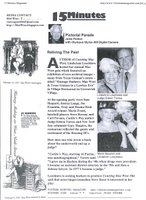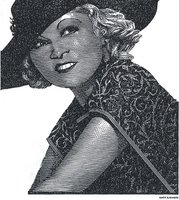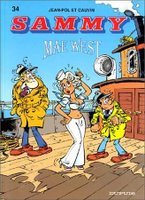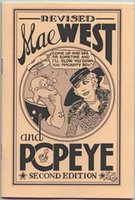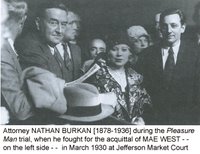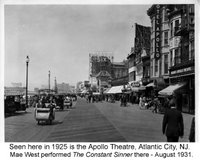Born on February 10, 1912 in either Mexico or Arizona, Albert "Chalky" Wright turned pro in the ring two weeks after his 16th birthday, scoring a four-round win over Nilo Balles. He spent the early part of his boxing career in Southern California. Standing 5' 6 1/2", Wright fought best at 126 pounds.

• • As the 1930s drew to a close, Chalky's best-known bouts were losses to the likes of Henry Armstrong and Lew Feldman. Any championship aspirations amounted to nothing more than lip service. However, Lady Luck appeared in the form of a new employer — none other than Hollywood movie queen
Mae West, for whom Chalky became a chauffeur, turning his back on the topsy-turvy world of boxing in favor of a steady paycheck.
• • Boxing historian Hank Kaplan explained: "Mae West liked having characters around, especially those in the prizefight game, and Chalky was an interesting fellow."
• • Chalky Wright had another quality that Mae West prized: loyalty. When the screen siren was robbed of a large sum of cash and jewelry, Wright became part of a decoy operation, driving around police officers Jack South (who hid on the floor) and Harry Dean (who dressed in drag to appear like the movie star) in an effort to nab the robbers and retrieve West's merchandise.
• • Such devotion did not go unreciprocated. Mae West helped to revive his career. In order for his family to meet their financial obligations, West hired Chalky's brother to take over the chauffeur's position. She then engaged promoter Morrie Cohen to line up a series of bouts that helped take Wright into contention.
• • It wasn't until he began fighting on the East Coast in 1938 that the boxing world took notice of Wright. He packed considerable power for a 126-pounder. By 1941, Wright was ranked among the top featherweights in the world and secured a title fight by decisioning future champion Sal Bartolo. On September 11, 1941, nearly 14 years after he turned pro, Wright knocked out Joey Archibald in the 11th round to win the world featherweight title. Less than a month after winning the title, Wright engaged in two tough non-title fights, losing to top contender Jose Peralta and decisioning former champ Leo Rodak.
• • In 1948, Chalky Wright finally retired, a veteran of 201 bouts in a career that spanned 20 years.
• • Amid speculation that Mae West and Wright were lovers, Hollywood Research (an information-gathering service for
Hollywood Confidential publishers) was preparing an expose for their November 1955 edition.
Hollywood Confidential Magazine sought a pay-off from Mae West. When Mae refused to give in to their blackmail, the magazine ran a tell-all, trumpeting on their sleazy front cover that Mae West had an "Open Door Policy" when it came to dark-skinned males.
• • In November 1955, readers who purchased this notorious scandal-sheet learned that Mae West had showered the fighter with pricey gifts, bought a house for his mother, and bankrolled his divorce.
• • In 1957, the State of California got into a courtroom tussle with
Hollywood Confidential over these attempts at extortion. The trial began in early August 1957 and involved many high-profile names in addition to Mae West - - like Desi Arnaz [married to Lucille Ball] and Clark Gable.
• • Mae West avoided testifying by supplying sworn depositions that denied she had a romance with Chalky Wright. On 12 August 1957, just before he was to testify, Chalky Wright [age 45] died suddenly in Los Angeles in the bathtub of his mother's house. Mae West insisted that her friend had been murdered.
• • Come up and see Mae every day online: http://MaeWest.blogspot.com/
________
Source:http://maewest.blogspot.com/atom.xml
 Mae West
Mae West• • Photo: Mae West's chauffeur • • Chalky Wright in 1941 • •
NYCMae West.




